Lady Of Drunkenness And How God Ra Wanted To Teach Humans A Lesson
A. Sutherland - AncientPages.com - In ancient Egyptian beliefs, before Egypt had human kings, the ruler was the god Ra. He was the creator sun god and the ruler of gods and humankind.
Ra - the creator of all things - was born each morning and died each evening. The time of his reign is attested by a text inscribed on one of the shrines found in the tomb of King Tutankhamun (c. 1336 BC- 1327 BC).
The text was also found on the walls of royal tombs. It is also believed that the original version of this myth may have originated much earlier, probably in a year when the great Nile River failed to flood and thousands of people died.
When Ra grew old, people came out against him and began plotting to overthrow him. Their lack of respect for the highest deity, angered him very much and he decided to take revenge on them.
He summoned his divine Eye, in the form of the goddess Hathor accompanied by the eight primeval deities of the Ogdoad pantheon. He also sent for Geb, god of earth, Shu (a personification of dry air and wind), his wife Tefnut (goddess of moisture, moist air, rain dew), and their daughter Nut, the sky goddess.
One advice was to punish humankind by burning them with his blazing heat. However, when Ra directed his Eye on humans, most people on earth ran for shelter to the rocks and thus, managed to escape his fury.
See also:
Hapi: Early Egyptian God Of The Nile And Bringer Of Fertility, Abundance And Life
Serket: Scorpion Goddess Who Could Heal Poisonous Bites And Sting Evildoers
Eye Of Ra – Powerful Ancient Egyptian Symbol With Deep Meaning
Frustrated, Ra called for another conference during which, the gods decided that Sekhmet, would be the best candidate to obey his order and punish people.
"No eye is better for this task than yours," concluded Nun.
"Let it go forth as Hathor- Sekhmet."
Hathor did as she was ordered.
He commanded his Eye Hathor to turn into Sekhmet, the lioness goddess and ordered her to teach the rebels a lesson.
Sekhmet slaughtered some of the people and splashed in their blood. No doubt, she could continue this malicious slaughter and totally destroy the rest of humankind, but Ra did not want it. By his revenge on humans, Ra only wanted to teach them a lesson but definitely not to wipe them out. It was time to act quickly to stop Sekhmet’s killing.
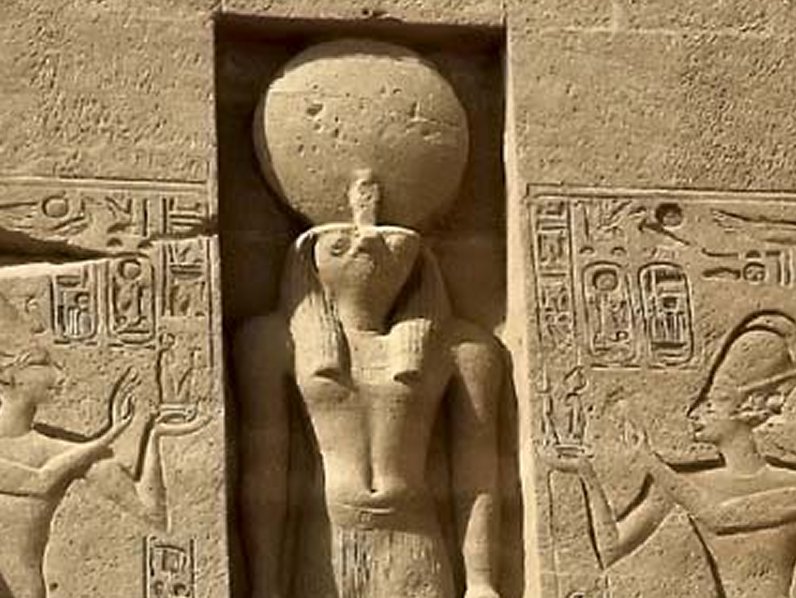 The Egyptian God Ra. Image credit: Bill Stanley (via ancient-egypt-online)
The Egyptian God Ra. Image credit: Bill Stanley (via ancient-egypt-online)
Ra ordered the high priest of his temple at Heliopolis to prepare 7,000 jars of beer and to dye it red. When this had been prepared, the beer-like intoxicating beverage was poured out on the ground so that it looked like a lake of blood. The lioness Sekhmet also assumed the lake was full of blood and without hesitation, she swooped down for a drink. She lapped up too much the dyed beer and became so drunk that she forgot about her killing mission.
When she finally regained her senses, she was immediately transformed from the ferocious lion into the beautiful and benevolent goddess Hathor. Humanity was safe again.
To restore friendly relations between the gods and humanity, Ra declared that the Egyptian people could drink as much as they liked at Hathor's festivals, in commemoration of Hathor, Lady of Drunkenness.
Written by – A. Sutherland - AncientPages.com Senior Staff Writer
Copyright © AncientPages.com All rights reserved. This material may not be published, broadcast, rewritten or redistributed in whole or part without the express written permission of AncientPages.com
More From Ancient Pages
-
 Ancient Footprints Offer Evidence Humans Wore Shoes 150,000 Years Ago – Scientists Say
Archaeology | Sep 11, 2023
Ancient Footprints Offer Evidence Humans Wore Shoes 150,000 Years Ago – Scientists Say
Archaeology | Sep 11, 2023 -
 Secret Hidden Freemasonic Messages Concealed In Ancient Egyptian Artifacts And Roman Works – Curious Stellar Symbol – Part 2
Ancient Mysteries | Feb 23, 2022
Secret Hidden Freemasonic Messages Concealed In Ancient Egyptian Artifacts And Roman Works – Curious Stellar Symbol – Part 2
Ancient Mysteries | Feb 23, 2022 -
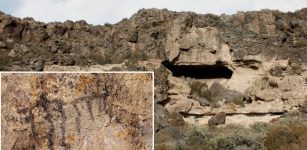 Puzzling Comb Drawing In Huenul Cave May Be The Oldest Rock Art In South America
Archaeology | Feb 15, 2024
Puzzling Comb Drawing In Huenul Cave May Be The Oldest Rock Art In South America
Archaeology | Feb 15, 2024 -
 Pitted Ware Culture – Neolithic Scandinavians Used Skin Boats To Trade And Travel Across Large Distances
Archaeology | Sep 11, 2024
Pitted Ware Culture – Neolithic Scandinavians Used Skin Boats To Trade And Travel Across Large Distances
Archaeology | Sep 11, 2024 -
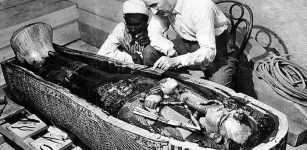 On This Day In History: King Tut’s Tomb Is Unsealed And Opened – On Feb 16, 1923
News | Feb 16, 2017
On This Day In History: King Tut’s Tomb Is Unsealed And Opened – On Feb 16, 1923
News | Feb 16, 2017 -
 Seven Times People Discovered The Americas And How They Got There
Featured Stories | Sep 9, 2022
Seven Times People Discovered The Americas And How They Got There
Featured Stories | Sep 9, 2022 -
 Men Are Slowly Losing Their Y Chromosome – Is The Future Of Humanity In Danger?
Featured Stories | Nov 7, 2023
Men Are Slowly Losing Their Y Chromosome – Is The Future Of Humanity In Danger?
Featured Stories | Nov 7, 2023 -
 Forgotten Graves Of The Knights Templar In Staffordshire Discovered By A Historian?
Archaeology | Aug 19, 2023
Forgotten Graves Of The Knights Templar In Staffordshire Discovered By A Historian?
Archaeology | Aug 19, 2023 -
 Magical Adder Stone And Its Immense Power
Celtic Mythology | Jul 14, 2018
Magical Adder Stone And Its Immense Power
Celtic Mythology | Jul 14, 2018 -
 Oxygen Spike Coincided With Ancient Global Extinction
Archaeology | Sep 3, 2021
Oxygen Spike Coincided With Ancient Global Extinction
Archaeology | Sep 3, 2021 -
 Hopi’s Encounter With Maasaw – The Skeleton Man And His Gift Of Sacred Knowledge
Myths & Legends | May 5, 2017
Hopi’s Encounter With Maasaw – The Skeleton Man And His Gift Of Sacred Knowledge
Myths & Legends | May 5, 2017 -
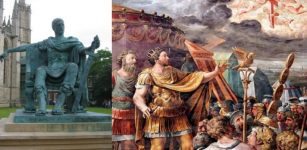 Constantine The Great – Did First Roman Christian Emperor Use Faith For His Own Agenda?
Featured Stories | Aug 8, 2018
Constantine The Great – Did First Roman Christian Emperor Use Faith For His Own Agenda?
Featured Stories | Aug 8, 2018 -
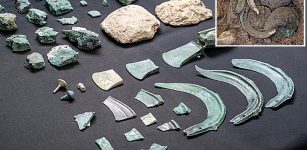 Unique 80 Bronze Age Artifacts Dated To Roman Campaign In The Alps In 15 BC – Discovered
Archaeology | Jul 3, 2023
Unique 80 Bronze Age Artifacts Dated To Roman Campaign In The Alps In 15 BC – Discovered
Archaeology | Jul 3, 2023 -
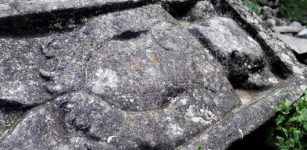 Pre-Hispanic Carved Stone Monuments Discovered On A Mountaintop In Puebla, Mexico
Archaeology | Jul 25, 2020
Pre-Hispanic Carved Stone Monuments Discovered On A Mountaintop In Puebla, Mexico
Archaeology | Jul 25, 2020 -
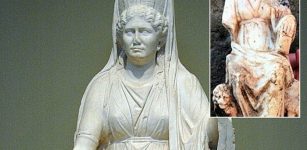 Marble 2th Century AD Statuette Of Goddess Cybele Unearthed In Bulgaria’s Plovdiv
Archaeology | Nov 5, 2019
Marble 2th Century AD Statuette Of Goddess Cybele Unearthed In Bulgaria’s Plovdiv
Archaeology | Nov 5, 2019 -
 Crannogs – Artificial Islands In Scotland Are Older Than Stonehenge
Archaeology | Jun 17, 2019
Crannogs – Artificial Islands In Scotland Are Older Than Stonehenge
Archaeology | Jun 17, 2019 -
 White Temple Of God Anu In Sacred Precinct Of Kullaba At Uruk
Civilizations | Oct 10, 2016
White Temple Of God Anu In Sacred Precinct Of Kullaba At Uruk
Civilizations | Oct 10, 2016 -
 Ancient City Of Adab That Flourished In North Sumer
Civilizations | Jul 19, 2017
Ancient City Of Adab That Flourished In North Sumer
Civilizations | Jul 19, 2017 -
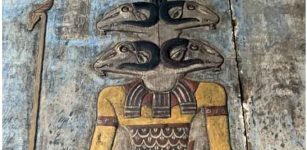 Reliefs And Engravings Of Celestial Bodies And A Zodiac On Walls And Ceilings Of Luxor’s Esna Temple
Archaeology | Oct 5, 2023
Reliefs And Engravings Of Celestial Bodies And A Zodiac On Walls And Ceilings Of Luxor’s Esna Temple
Archaeology | Oct 5, 2023 -
 Limestone Stela Of Liberation Discovered In Kom Ombo Temple In Aswan, Egypt
Archaeology | Oct 17, 2018
Limestone Stela Of Liberation Discovered In Kom Ombo Temple In Aswan, Egypt
Archaeology | Oct 17, 2018

